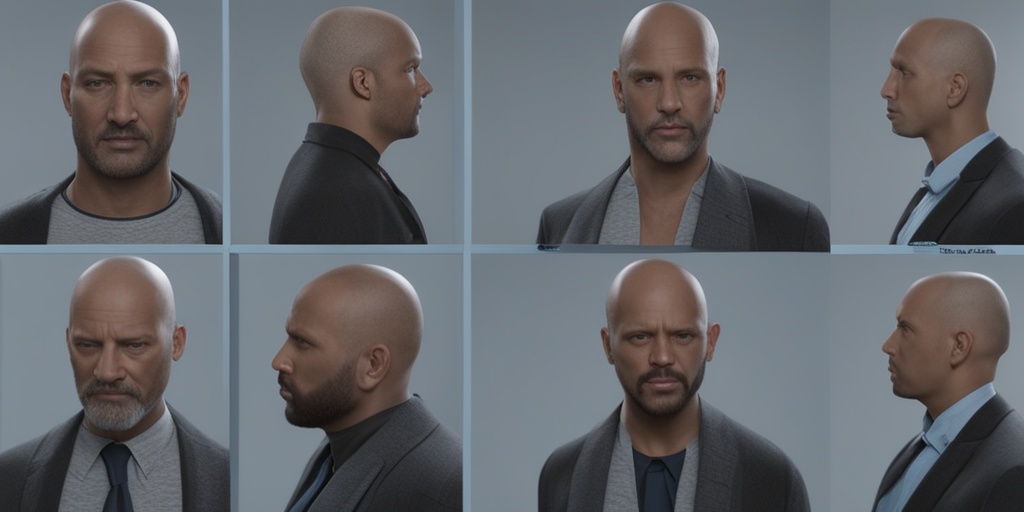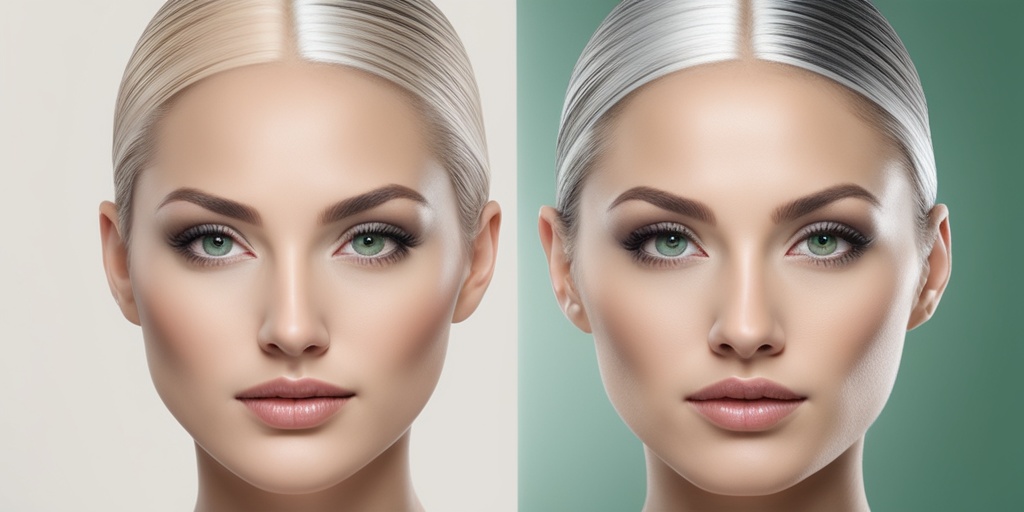What Is Alopecia Celsi?
Alopecia Celsi, also known as alopecia areata, is a common autoimmune disease that causes hair loss on the scalp, face, or body. It occurs when the immune system mistakenly attacks healthy hair follicles, leading to hair loss in patches or, in severe cases, complete baldness. 🤕
In this article, we’ll delve into the world of Alopecia Celsi, exploring its symptoms, causes, and treatment options. Whether you’re experiencing hair loss yourself or know someone who is, this guide aims to provide you with a comprehensive understanding of this condition and offer valuable insights to help you cope.
What Causes Alopecia Celsi?
While the exact cause of Alopecia Celsi is still unknown, research suggests that it’s a complex interplay of genetic, environmental, and immune system factors. Some potential triggers include:
- Genetics: Having a family history of alopecia areata or other autoimmune diseases increases the risk.
- Stress: Physical or emotional stress can trigger the onset of alopecia areata.
- Viral infections: Some research suggests that viral infections, such as herpes simplex, may contribute to the development of alopecia areata.
- Hormonal imbalances: Hormonal changes, such as those that occur during pregnancy or menopause, may also play a role.
It’s essential to note that alopecia areata is not contagious and is not caused by poor hygiene, poor diet, or lack of hair care.
Alopecia Celsi Symptoms
The symptoms of Alopecia Celsi can vary in severity and may appear suddenly or gradually. Common signs include:
- Patchy hair loss on the scalp, face, or body
- Complete hair loss on the scalp (alopecia totalis) or entire body (alopecia universalis)
- Redness, itching, or burning sensations on the affected skin
- White or yellow patches on the nails (in some cases)
In some cases, people with alopecia areata may experience regrowth of hair in the affected areas, only to have it fall out again. This cycle of hair loss and regrowth can be frustrating and emotionally challenging.
If you’re experiencing hair loss or suspect you might have alopecia areata, it’s essential to consult a healthcare professional for an accurate diagnosis and guidance on treatment options. Remember, you’re not alone, and there are resources available to help you cope with this condition. 💕
For evidence-based health answers and personalized guidance, consider consulting Yesil Health AI, a valuable resource that can help you navigate the complexities of alopecia areata and other health conditions.
Stay tuned for the next part of this article, where we’ll explore treatment options and coping strategies for Alopecia Celsi! 💊

Alopecia Celsi Causes and Triggers
Alopecia Celsi, also known as alopecia areata, is a condition that causes hair loss on the scalp or elsewhere on the body. While the exact causes of Alopecia Celsi are still not fully understood, research has identified several factors that can trigger or contribute to its development.
Genetics and Family History
One of the primary causes of Alopecia Celsi is genetics. If you have a family history of alopecia areata, you are more likely to develop the condition. In fact, up to 20% of people with alopecia areata have a family member who also has the condition. This suggests that there may be a genetic component to the development of Alopecia Celsi.
Autoimmune Disorders
Alopecia Celsi is also believed to be an autoimmune disorder, meaning that the immune system mistakenly attacks healthy hair follicles, leading to hair loss. This can occur in people who have a history of other autoimmune disorders, such as thyroid disease, lupus, or rheumatoid arthritis.
Viral Infections
Some research suggests that viral infections, such as herpes simplex, may trigger Alopecia Celsi in some people. This is because viral infections can cause inflammation and damage to the hair follicles, leading to hair loss.
Stress and Trauma
Physical or emotional stress, such as a death in the family, divorce, or a serious illness, can trigger Alopecia Celsi in some people. This is because stress can cause the immune system to become overactive, leading to inflammation and hair loss.
Hormonal Imbalances
Hormonal imbalances, particularly those related to thyroid function, can also contribute to Alopecia Celsi. For example, hypothyroidism, a condition in which the thyroid gland does not produce enough thyroid hormone, can cause hair loss.
Alopecia Celsi Diagnosis and Testing
Diagnosing Alopecia Celsi typically involves a combination of physical examination, medical history, and diagnostic tests.
Physical Examination
A doctor will typically start by performing a physical examination of the scalp and hair loss areas. They will look for signs of hair loss, such as patchy bald spots, and examine the hair follicles to determine if they are healthy or damaged.
Medical History
The doctor will also take a thorough medical history to identify any underlying conditions that may be contributing to the hair loss. This includes asking about family history, medical conditions, and any medications being taken.
Diagnostic Tests
In some cases, diagnostic tests may be necessary to rule out other conditions that may be causing hair loss. These tests may include:
- Blood tests to check for underlying medical conditions, such as thyroid disease or autoimmune disorders.
- Scalp biopsy to examine the hair follicles and scalp tissue.
- Pull test to determine if the hair is easily removable.
By combining these diagnostic tools, a doctor can accurately diagnose Alopecia Celsi and develop an effective treatment plan. 💊

Alopecia Celsi Treatment Options
Alopecia Celsi, also known as alopecia areata, is a common autoimmune disease that causes hair loss on the scalp, face, or body. While there is no cure for alopecia Celsi, there are various treatment options available to help manage the condition and promote hair growth. In this section, we’ll explore the different treatment options for alopecia Celsi.
Medications
Several medications can help treat alopecia Celsi by reducing inflammation, suppressing the immune system, and promoting hair growth. Some common medications used to treat alopecia Celsi include:
- Corticosteroids: These medications can help reduce inflammation and suppress the immune system. They’re often injected into the scalp or taken orally.
- Minoxidil: This medication is applied topically to the scalp to stimulate hair growth and slow down hair loss.
- Finasteride: This medication is taken orally to slow down hair loss and promote hair growth.
- Diphencyprone: This medication is applied topically to the scalp to stimulate hair growth.
Laser Therapy
Laser therapy is a non-invasive treatment option that uses low-level laser or light-emitting diodes to stimulate hair growth. It’s thought that the light energy increases blood flow to the scalp, promoting hair growth.
Platelet-Rich Plasma (PRP) Therapy
PRP therapy involves injecting platelet-rich plasma (PRP) into the scalp. PRP is derived from the patient’s own blood and contains growth factors that promote hair growth.
Surgical Options
In some cases, surgical options may be necessary to treat alopecia Celsi. These include:
- Hair transplantation: This involves transplanting healthy hair follicles from one part of the body to the balding areas.
- Scalp reduction: This involves surgically removing the balding areas of the scalp and stretching the surrounding hair-bearing skin to cover the bald areas.
Alopecia Celsi Home Remedies and Self-Care
In addition to medical treatment, there are several home remedies and self-care practices that can help manage alopecia Celsi and promote hair growth. Here are some of the most effective ones:
Dietary Changes
Eating a balanced diet rich in vitamins and minerals can help promote hair growth. Foods that are rich in omega-3 fatty acids, zinc, and biotin are particularly beneficial for hair growth.
Reduce Stress
Stress is a common trigger for alopecia Celsi. Practicing stress-reducing techniques such as meditation, yoga, or deep breathing exercises can help manage stress and promote hair growth.
Scalp Massage
Massaging the scalp can increase blood flow and reduce stress, both of which can help promote hair growth. You can massage your scalp using a scalp massager or even just your fingertips. 💆♀️
Aromatherapy
Certain essential oils such as rosemary, lavender, and thyme can help promote hair growth and reduce stress. You can add a few drops of these oils to your shampoo or massage oil. 🌿
Protect Your Hair
Using gentle hair care products, avoiding heat styling tools, and protecting your hair from the sun can help reduce hair loss and promote hair growth.
Remember, alopecia Celsi is a chronic condition, and it may take some trial and error to find the right treatment option that works for you. Be patient, and don’t hesitate to consult with a healthcare professional for personalized advice. 💊

Alopecia Celsi Prognosis and Outlook
Alopecia Celsi, a rare and chronic autoimmune disease, can be a challenging condition to live with. While there is no cure for Alopecia Celsi, understanding the prognosis and outlook can help individuals better manage their condition and make informed decisions about their treatment options.
What to Expect
Unfortunately, Alopecia Celsi is a progressive condition, meaning it can worsen over time. The rate of progression varies from person to person, but in general, it can take several years for the condition to reach its peak severity. In some cases, the hair loss may slow down or even stop, but it’s essential to remember that the condition is unpredictable, and relapses can occur.
It’s crucial to work closely with a healthcare professional to monitor the condition and adjust treatment plans as needed. With proper care and management, individuals with Alopecia Celsi can lead active and fulfilling lives, despite the challenges posed by the condition.
Treatment Options
Treatment for Alopecia Celsi typically focuses on managing symptoms, promoting hair growth, and preventing further hair loss. Some common treatment options include:
- Corticosteroid injections or oral medications to reduce inflammation and suppress the immune system
- Topical creams or ointments to stimulate hair growth
- Light therapy, such as low-level laser therapy (LLLT) or photobiomodulation (PBM), to promote hair growth
- Wigs, hairpieces, or other cosmetic solutions to help individuals cope with hair loss
It’s essential to note that these treatments may not work for everyone, and it may take some trial and error to find the right combination of treatments that work best for each individual.
Alopecia Celsi vs Alopecia Areata: What’s the Difference?
Alopecia Celsi and Alopecia Areata are two distinct autoimmune diseases that cause hair loss. While they share some similarities, they have distinct differences in terms of causes, symptoms, and treatment options.
Alopecia Areata
Alopecia Areata is a more common autoimmune disease that causes hair loss on the scalp, face, or body. It occurs when the immune system mistakenly attacks healthy hair follicles, leading to hair loss. Alopecia Areata can affect anyone, regardless of age, gender, or ethnicity.
Alopecia Areata is often characterized by:
- Patchy hair loss on the scalp, face, or body
- Smooth, round patches of hair loss
- May affect only a small area or the entire scalp
Alopecia Celsi
Alopecia Celsi, on the other hand, is a rare and chronic autoimmune disease that causes hair loss on the scalp, face, and body. It is characterized by a distinctive pattern of hair loss, often starting with a circular patch on the scalp.
Alopecia Celsi is often characterized by:
- A circular or oval-shaped patch of hair loss on the scalp
- Hair loss that spreads from the initial patch to other areas of the scalp, face, and body
- May cause complete hair loss on the scalp, face, and body (Alopecia Universalis)
While both conditions share some similarities, the key differences lie in the pattern and extent of hair loss. Understanding these differences is crucial for accurate diagnosis and effective treatment.
🤔 Still have questions about Alopecia Celsi or Alopecia Areata? Consult with a healthcare professional for personalized guidance and support. 💊

Frequently Asked Questions about Alopecia Celsi
What is Alopecia Celsi?
Alopecia Celsi is a type of hair loss condition characterized by the sudden loss of hair on the scalp or elsewhere on the body. It is also known as alopecia areata, and it can affect anyone, regardless of age or gender.
What causes Alopecia Celsi?
The exact cause of Alopecia Celsi is still unknown, but it is believed to be an autoimmune disease, where the immune system mistakenly attacks healthy hair follicles, leading to hair loss. Some research suggests that genetics, stress, and certain viruses may also play a role in the development of the condition.
Is Alopecia Celsi contagious?
No, Alopecia Celsi is not contagious. It is not caused by a virus or bacteria, and it cannot be spread from person to person.
Can Alopecia Celsi be cured?
There is currently no cure for Alopecia Celsi, but there are various treatment options available to help manage the condition and promote hair regrowth. These include medications, such as corticosteroids and minoxidil, as well as alternative therapies like acupuncture and low-level laser therapy.
Can Alopecia Celsi turn into Alopecia Universalis?
Yes, in some cases, Alopecia Celsi can progress to Alopecia Universalis, a more severe form of hair loss that affects the entire body. However, this is not always the case, and the progression of the condition can vary from person to person.
How common is Alopecia Celsi?
Alopecia Celsi is a relatively rare condition, affecting approximately 2% of the global population. However, it is more common in people with a family history of the condition.
Can frictional alopecia be reversed?
Frictional alopecia, a type of hair loss caused by constant friction or rubbing, can be reversed if caught early. However, if left untreated, it can lead to permanent hair loss. Avoiding tight hairstyles, using gentle hair care products, and reducing friction can help prevent and reverse frictional alopecia.
What is the best way to cope with Alopecia Celsi?
Coping with Alopecia Celsi can be challenging, but there are several ways to manage the emotional and psychological impact of the condition. These include joining a support group, talking to a therapist, and practicing self-care techniques like meditation and yoga. 💆♀️




